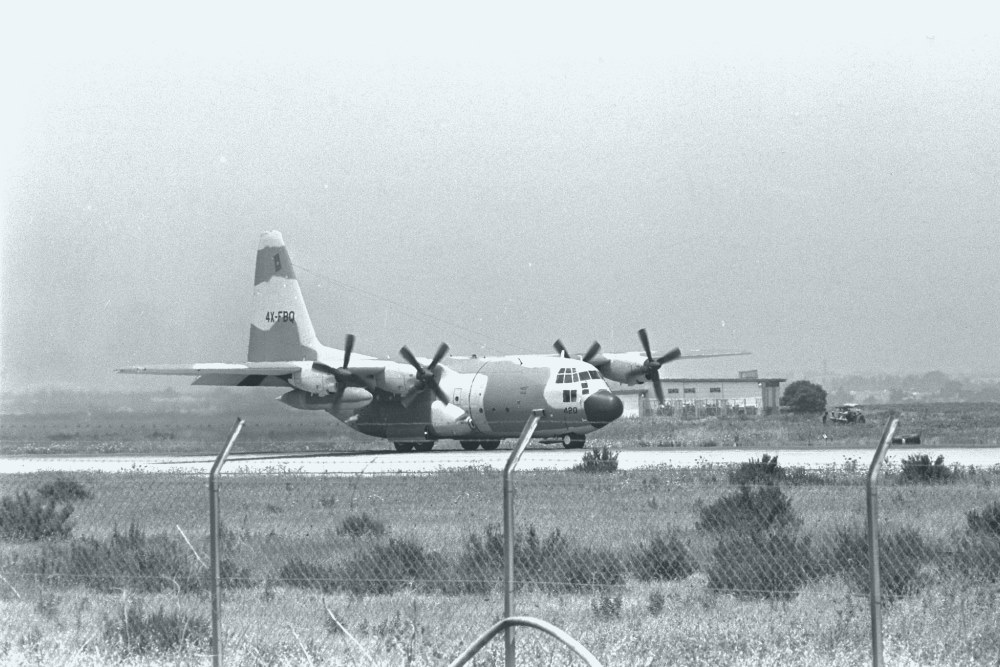
On July 4, 1976, Israel executed one of the most daring and successful rescue missions in modern history. The meticulously planned operation unfolded with precision, as IDF Forces freed 102 hostages held by terrorists at Uganda’s Entebbe Airport and returned them safely to Israel.
Here’s an inside look at the high-stakes drama that played out behind the scenes.
The saga began on June 27, 1976, when Air France Flight 139, en route from Tel Aviv to Paris, was hijacked shortly after a stopover in Athens. The hijackers, two members of the Popular Front for the Liberation of Palestine and two German militants from the Revolutionary Cells, redirected the plane to Entebbe, Uganda.
There, they terrorists were joined by more accomplices and the Ugandan military, under the regime of dictator Idi Amin. The hostages were held in the old terminal of Entebbe Airport, with the hijackers demanding the release of Palestinian prisoners and threatening to kill the captives.
Planning the rescue mission
In Israel, the gravity of the situation galvanized the government into immediate action. Prime Minister Yitzhak Rabin and Defense Minister Shimon Peres were at the helm of a crisis team that included intel and military experts. While negotiations were initiated to buy time, the IDF started to put together a rescue plan.
Intelligence gathering was paramount. Mossad collected crucial information about the layout of Entebbe Airport, the number of hijackers, and the support they had from Ugandan forces.
The plan, code-named Operation Thunderbolt, was audacious, complex and extremely risky. The key elements involved a surprise airborne assault, a brief ground engagement, and the rapid extraction of the hostages.
The IDF’s most capable unit, Sayeret Matkal, was chosen to spearhead the mission. Commandos trained rigorously, using a life-size model of the Entebbe terminal built for rehearsals. Every conceivable scenario was drilled repeatedly, down to the smallest detail.
Preparing for battle
The preparation phase was a blend of intelligence work, physical training, and psychological readiness.
Intel officers worked tirelessly to gather detailed information. They consulted with the construction firm that built the Entebbe terminal, obtaining blueprints and structural details. They also interviewed hostages released earlier, obtaining vital information about the hijackers and layout.
In parallel, the commandos of Sayeret Matkal underwent intense training. A full-scale replica of the Entebbe terminal was constructed in Israel, where the soldiers practiced storming the building over and over to perfect the plan and coordination under pressure.
The psychological preparation was equally crucial. The rescue forces were briefed on the stakes and the potential dangers. They had to be mentally ready to face not only armed hijackers but also the possibility of engagement with Ugandan forces.
The mission was fraught with risks, with any deviation or unexpected resistance potentially leading to disaster. Given the distance from Israel, the IDF could have lost hundreds of its best forces in battle in case anything went wrong.
90 minutes in Uganda
On July 3, four C-130 Hercules transport planes took off and headed deep into Africa, carrying hundreds of troops and several Land Rovers. The inclusion of a black Mercedes in the convoy, mimicking Idi Amin’s vehicle, was a psychological tactic designed to confuse and delay the enemy.
The C-130s approached Entebbe under the cover of darkness. As the first plane landed, the Mercedes and Land Rovers rolled out, aiming to maintain the element of surprise by impersonating Amin’s entourage. However, a Ugandan soldier challenged them. He was swiftly eliminated by the forces.
Once at the terminal, the commandos stormed the building, rapidly neutralizing the hijackers. However, the commander of the rescue team, Yoni Netanyahu, was fatally wounded outside the terminal by shots fired from the control tower.
In parallel to the commando raid, other units destroyed Ugandan fighter jets on the ground to prevent pursuit. Within 90 minutes, the hostages were aboard the planes, and the operation was completed. Tragically, three captives were killed.
Operation Entebbe was a resounding success and dealt a severe blow to international terrorism. The daring raid became a blueprint for future counter-terror operations, inspiring other rescue missions around the globe.
Most of all, the operation demonstrated Israel’s unwavering commitment to protecting its citizens, while showcasing the extraordinary capabilities of its military and intelligence forces.


